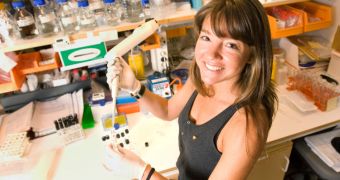A team of experts from the Karolinska Institutet, in Sweden, say that they were able to establish a direct link between the onset of metabolic conditions such as blood lipid disorder, diabetes and obesity and a dysfunction occurring in lipid cells.
If put to good use, this discovery could result in the development of a new series of drugs and therapies against these diseases, which affects tens of millions of people between themselves. Obesity is especially widespread, predominately in the developed world.
KI scientists were able to reach their conclusions by measuring carbon-14 concentrations in the human body. The carbon isotope allowed the researchers to establish the intricate connections. Details of the new work appear in the latest issue of the top scientific journal Nature.
One of the main implications is that people who are fat because they eat too much cannot shake their excess weight because their bodies are primed to store fats. In other words, this helps explain why it's so much easier to pile up the pounds, rather than lose them.
For this study, the team collected samples from 100 volunteers. The participants ranged in body build from slim to morbidly obese. The reason why experts used the C-14 isotope was because they needed to know the age of fat in the cells.
“One might intuitively think that this was the case. But this is the first time that someone has demonstrated that the metabolism of fat in the fat cells differs between healthy and obese individuals,” KI researcher and study co-leader Peter Arner explains.
KI investigator Kirsty Spalding was the other study co-leader. This finding “paves the way for new research fields and therapies that affect the storage and release of fat from fat cells,” Arner adds.
“We can use measurements of carbon-14 in fat against known levels of 14C in the atmosphere to date stamp the fat,” comments Dr. Spalding, who is in fact the scientist who developed the C-14 research method for biological samples.
During the 10 years a fat cell lives, its contents are renewed an average of six times. But people with diabetes or obesity demonstrate a much lower number of renewals. Scientists now plan to scan this connection in more detail, in order to establish why this happens, AlphaGalileo reports.

 14 DAY TRIAL //
14 DAY TRIAL //